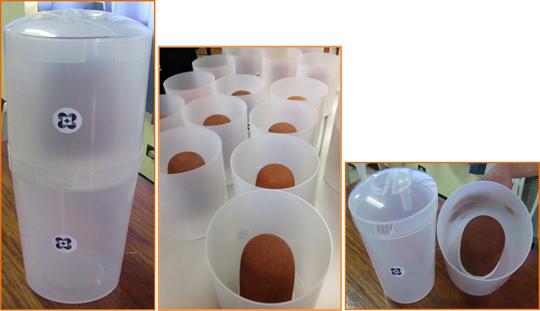An Anti-Microbial Water Filter for EveryJuan
Researchers at DOST are excited about their newly-developed anti-microbial water filter technology that uses local clay material.
Water, water is everywhere, so goes a nursery rhyme. But did you know that the Philippines, known to be a water-surrounded country, has still areas deprived of clean drinking water even outlying areas that are nearby water bodies? To further confirm this, the country's main sources of freshwater are rainfall, surface water which embrace water bodies like rivers, lakes, and reservoirs, and groundwater. There are 18 major river basins and 421 principal river basins in 119 proclaimed watersheds located in the country. It also has 79 lakes covering an area of 1,830 square kilometers or 0.61 percent of the national area. The Philippines also possesses groundwater reservoir of 1 about 50,000 square kilometers as part of the 14 percent of the national water resource potential.
What is even more mind-boggling are the following statistics. The 2002 Annual Poverty Indicators Survey performed by the National Statistics Office (NSO) reported that 20% of the total population or 3.2 million families have no access to potable water. Moreover, according to DILG, there are 432 waterless municipalities or 1.5 million households outside Metro Manila have no access to safe drinking water in 2010. Municipalities with less than 50% service coverage are identified as 'waterless municipalities'.
Potable water please!
The above reports and add the daily doctors' advice that everyJuan needs at least 8 glasses of water per day for our body to function well, emphasize the importance of water. Further, water is the body's principal chemical component and makes up about 60% of body weight and since the body cannot store water, fresh supply is needed everyday. (source: Wikipedia).
According to Dr. Danilo C. Israel of the Philippine Institute for Development Studies (PIDS), water pollution decreases the availability of clean potable water in the Philippines. Likewise, it brings water-borne diseases which account to one-sixth of the reported disease cases and nearly 6,000 premature deaths a year. .
Analyzing the presence of many sources of water in the country against the problem of households with no access to potable water, the only answer to this is a science and technology(S&T) intervention that will make the available water everywhere potable and available.
Taking the cue, let S&T intervene
The Department of Science and Technology (DOST) thru the Industrial Technology Development Institute (ITDI) saw this need for a technology intervention and embarked on a project to produce ceramic water filter for water filtration system to be deployed in the 16 regions of the country, especially in the far flung areas.
The DOST-ITDI has developed the ceramic water filter system made of red clay coated with an anti-microbial agent that can substitute the chlorination process of purifying water. In this aspect, nanotechnology was applied. This technology has passed the Philippine National Standards (PNS) for water in terms of microbiological analysis. Further, the production cost of a single unit of the technology is very reasonable especially for poor families to acquire in order to have access to safe drinking water.
Aside from developing the ceramic water filter, another objective of the project is to establish production centers for the filter in the regions, as well as provide the filter to households that have no access to safe drinking water. Some provinces in CAR, Regions1-3, 5, 8, 10 and 12, had been found as potential areas for the establishment of production centers for ceramic water filter as a result of testing and analyses of clay samples at ITDI.
San Fernando, Pampanga is pioneering in the transfer of the technology. The Baluyut Property, private cooperator of the project, has undergone a series of trainings conducted by DOST and has installed one production center for ceramic water filters.
The project is under the programs of the Philippine Council for Industry, Energy and Emerging Technology Research and Development (DOST-PCIEERD). Overall, it intends to contribute in achieving the Philippine Millennium Development Goal (MDG) target to increase the proportion of population with access to potable water (level I & II) from 82.9 percent in 2007 to 86.6 percent in 2016.
This project is one shining example of how S&T could respond even to the simplest of problems of everyJuan in the country, as long as we invest. Dehydration is the most immediate effect if one doesn't drink enough water, but S&T can actually quench a number of our simple needs. Let's drink to that! (Maria Elena A. Talingdan)





